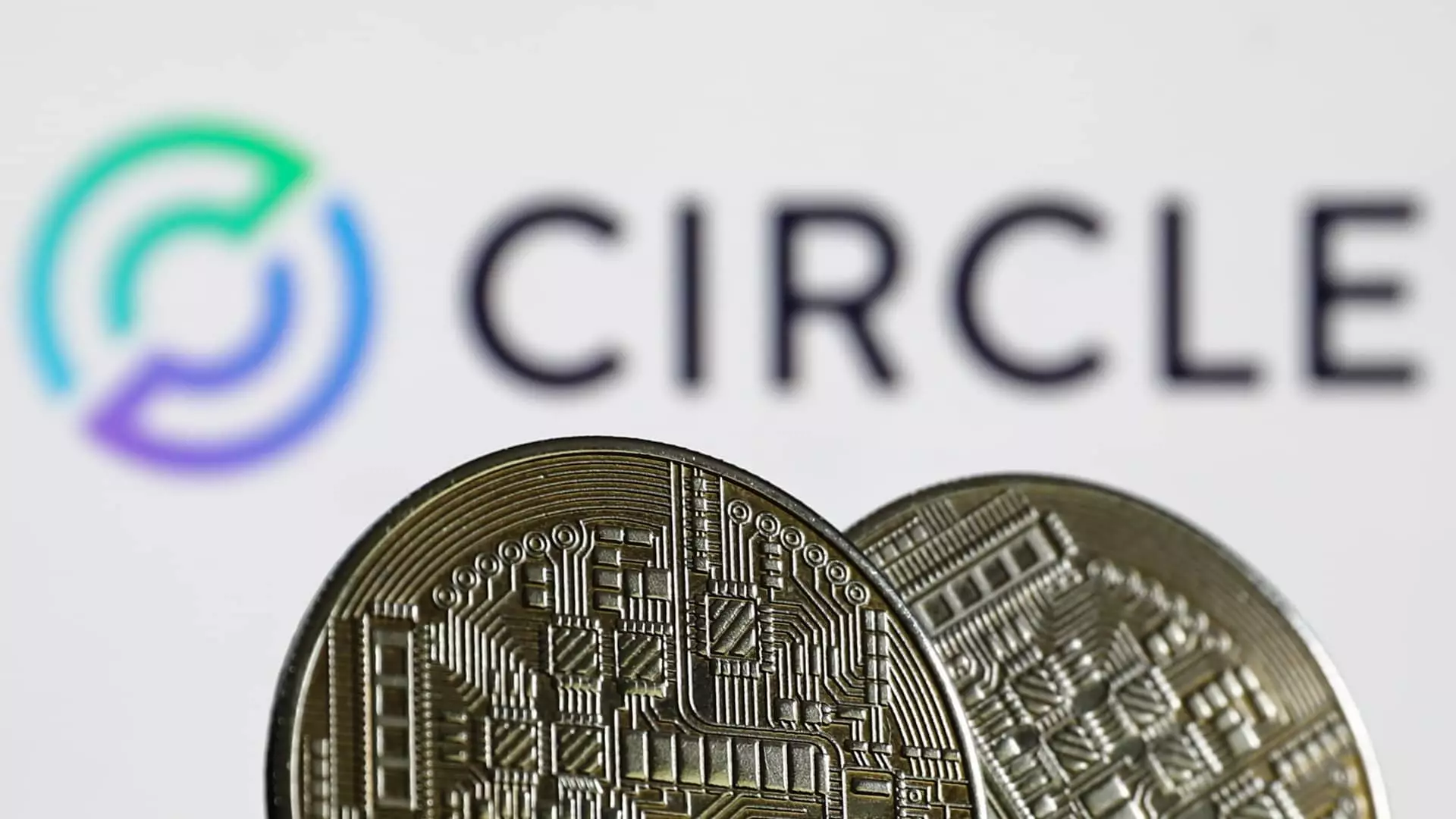Circle, the driving force behind the widely recognized USDC stablecoin, is poised to enter the initial public offering (IPO) arena, embarking on a journey that could redefine its stature in the financial ecosystem. The company aims to amass approximately $624 million at a staggering valuation projected to hover around $6 billion. While this figure sounds impressive, one must inquire whether this prospective surge truly reflects the growing confidence in both Circle and the broader cryptocurrency market or if it is merely a gamble on speculative fervor.
CEO Jeremy Allaire’s firm strategy involves floating 24 million shares of Class A common stock, broken down into 9.6 million shares from the company and a solid 14.4 million from existing shareholders. The price range set forth, between $24 and $26 per share, stirs thoughts about whether this valuation adequately captures the company’s momentum and the potential for the future. While investors like Cathie Wood’s ARK Investment Management show interest, one must maintain a vigilant skepticism about whether this IPO will withstand the unforgiving scrutiny of the market.
The Growing Significance of USDC
USDC has carved out a notable niche in the cryptocurrency sector, with a circulation of approximately $62 billion. This positions it as a formidable competitor, capturing around 27% of the stablecoin market. What stands out is that, unlike Tether, which commands a staggering 67% dominance, USDC has displayed resilience, with its market cap climbing 40% this year compared to Tether’s rather tepid growth rate of 10%. This raises an intriguing question: is USDC on the verge of a significant shift in market positioning, or are these growth figures just temporary spikes masked by the soaring excitement in the crypto community?
The recent movements within the stablecoin sector further amplify this narrative. As legislative discussions around stablecoin regulation heat up, there’s palpable optimism in the air. The implications of the Senate voting in favor of advancing crypto legislation cannot be understated. This effort may pave the way for a regulatory framework that could bolster not only USDC’s position but also enhance the credibility of stablecoins as a whole—a win for proponents of the crypto space, but it also calls for critical thought regarding the potential pitfalls of over-regulation.
The Ripple Effect for Crypto Exchanges
The ramifications of Circle’s IPO stretch beyond its own walls, potentially affecting major players like Coinbase, a co-founder of USDC. Coinbase’s unique revenue-sharing agreement with Circle—where it takes 50% of revenues—underscores the intertwined fate of both companies. With Coinbase CEO Brian Armstrong openly declaring his ambition to position USDC as the leading stablecoin globally, all eyes will be on how this IPO shapes the dynamics of crypto trading platforms.
Will Coinbase’s interests align with Circle’s aspirations, or are we witnessing a situation where conflicting agendas could unravel? It’s essential to delve deeper into how these relationships unfold in a competitive, fast-paced environment where trust and transparency are more critical than ever.
The Anti-Monopoly Sentiment in Crypto
While discussions often tend to elevate the merits of growing stablecoins, one must not overlook the broader implications regarding U.S. dollar dominance. The narrative surrounding stablecoins, like USDC, is not just about currency but also about power dynamics within global finance. The ability of stablecoins to function as a utility for international dollar transactions could be seen as a direct challenge to existing structures. Advocates see this as a boon for democratization and improved capital flow, but opponents might argue it further solidifies the monetary system’s reliance on a singular currency.
Furthermore, with prominent figures advocating for rapid crypto regulation and a framework surrounding stablecoins, it raises essential questions about who will ultimately hold power in this rapidly evolving financial landscape. Will smaller companies and innovations get stifled under regulatory blanket policies, or will we see an equitable space fostered for all players involved?
Circle’s IPO is undoubtedly a significant event, laden with potential and risk alike. Whether this endeavor results in a bright future for USDC or unveils greater vulnerabilities in the crypto sector remains to be seen, but it’s clear that this step is not just a financial maneuver; it could represent a turning point in how we view cryptocurrencies and their place in the global economic infrastructure. The confluence of ambition, inherent risks, and intricate regulatory scheming suggests that the journey ahead will be pivotal.

